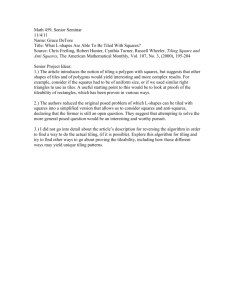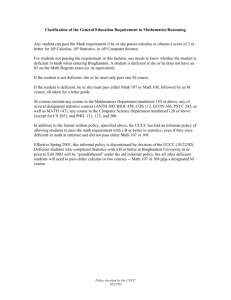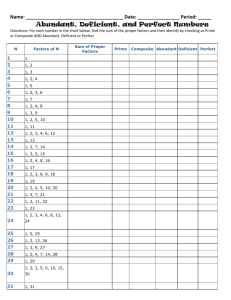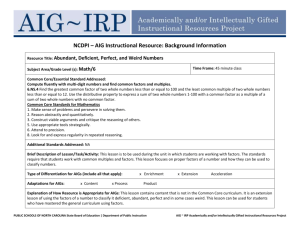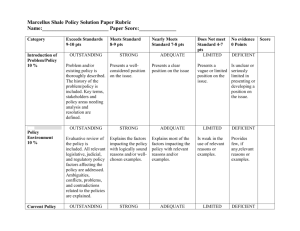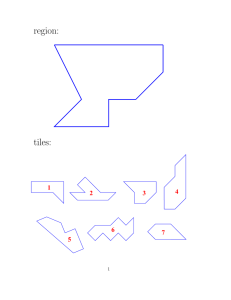hw04 - Rose
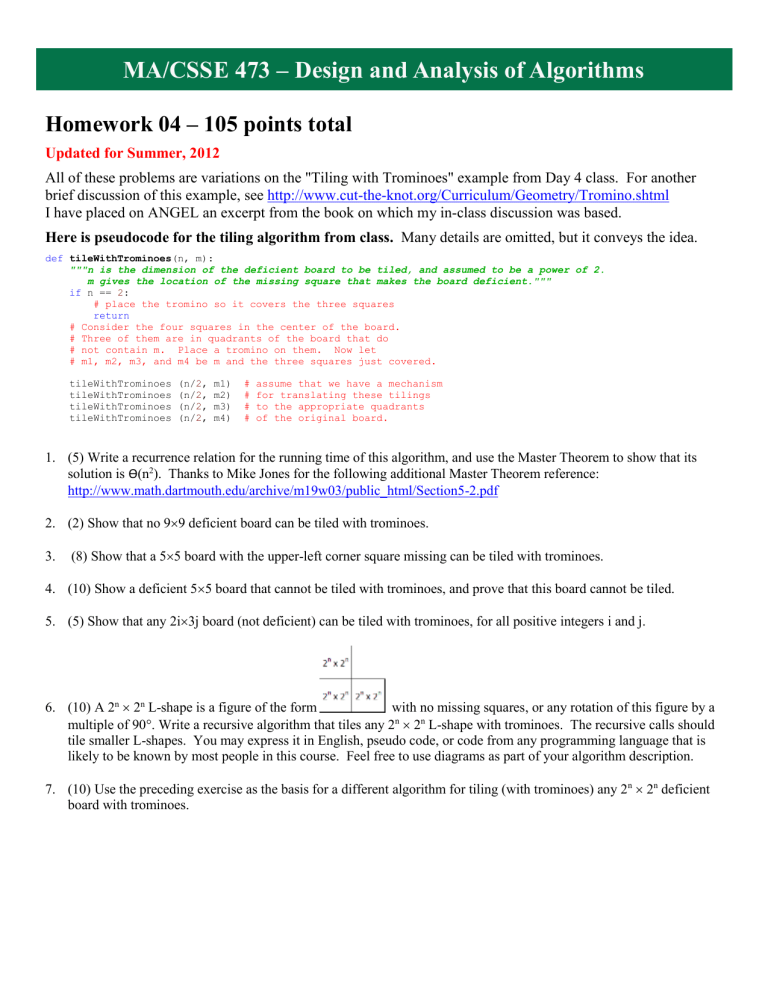
MA/CSSE 473 – Design and Analysis of Algorithms
Homework 04 – 105 points total
Updated for Summer, 2012
All of these problems are variations on the "Tiling with Trominoes" example from Day 4 class. For another brief discussion of this example, see http://www.cut-the-knot.org/Curriculum/Geometry/Tromino.shtml
I have placed on ANGEL an excerpt from the book on which my in-class discussion was based.
Here is pseudocode for the tiling algorithm from class. Many details are omitted, but it conveys the idea.
def tileWithTrominoes (n, m):
"""n is the dimension of the deficient board to be tiled, and assumed to be a power of 2.
m gives the location of the missing square that makes the board deficient.""" if n == 2 :
# place the tromino so it covers the three squares return
# Consider the four squares in the center of the board.
# Three of them are in quadrants of the board that do
# not contain m. Place a tromino on them. Now let
# m1, m2, m3, and m4 be m and the three squares just covered.
tileWithTrominoes (n/ 2 , m1) # assume that we have a mechanism
tileWithTrominoes (n/ 2 , m2) # for translating these tilings
tileWithTrominoes (n/ 2 , m3) # to the appropriate quadrants
tileWithTrominoes (n/ 2 , m4) # of the original board.
1.
(5) Write a recurrence relation for the running time of this algorithm, and use the Master Theorem to show that its solution is Ѳ (n 2 ). Thanks to Mike Jones for the following additional Master Theorem reference: http://www.math.dartmouth.edu/archive/m19w03/public_html/Section5-2.pdf
2.
(2) Show that no 9
9 deficient board can be tiled with trominoes.
3.
(8) Show that a 5
5 board with the upper-left corner square missing can be tiled with trominoes.
4.
(10) Show a deficient 5
5 board that cannot be tiled with trominoes, and prove that this board cannot be tiled.
5.
(5) Show that any 2i
3j board (not deficient) can be tiled with trominoes, for all positive integers i and j.
6.
(10) A 2 n
2 n L-shape is a figure of the form with no missing squares, or any rotation of this figure by a multiple of 90°. Write a recursive algorithm that tiles any 2 n
2 n L-shape with trominoes. The recursive calls should tile smaller L-shapes. You may express it in English, pseudo code, or code from any programming language that is likely to be known by most people in this course. Feel free to use diagrams as part of your algorithm description.
7.
(10) Use the preceding exercise as the basis for a different algorithm for tiling (with trominoes) any 2 n
2 n deficient board with trominoes.
8.
(20) More induction practice. a.
(15 points) Use (strong) mathematical induction to prove the following properties of binary trees: If a binary tree has leaves L
1
, L
2
, …, L
M
whose depths (distance from the tree’s root) are d
1
, d
2
, …, d
M
, respectively, then
∑
𝑀 𝑖=1
2
−𝑑 𝑖 ≤ 1. You may want to draw a few tree shapes to convince yourself that it is true before you prove it. I suggest using as the basis for your induction the definition of binary tree as either empty or a root with two binary subtrees. b.
(5 points) Give a condition on the tree shape that is necessary and sufficient for replacing the “less than or equal to” sign in the statement with an “equals” sign. You do not have to supply a proof for this part.
9.
(10) Show that any deficient 7
7 board can be tiled with trominoes. You will probably want to use the results of some of the previous problems. There will be several different cases, depending on the location of the missing square.
10.
(25) Trominoes Animation. http://www.rose-hulman.edu/class/csse/csse473/201240/Homework/Trominoes.pdf
(There are 4 extra grace days for this problem only)
